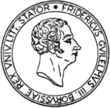The concept for Maurel's calculating machine from 1842
In addition to his work as a watchmaker, Frenchman Zoé Timoléon Louis Maurel was also the developer and designer of a mechanical calculating machine that was intended to realize automatic multiplication. Instead of several crank movements, users would simply set the desired factor in the machine for a multiplication and then operate the crank once.
He received the first patent for this in 1842 and built the first prototypes. One of these prototypes is currently on permanent loan to the Arithmeum from the IBM Collection USA. It has been fully restored and is now in perfect working order! You can see more information about this restoration project in this video.
While the prototype demonstrates very well the advantages of its design, it was not yet suitable for mass production. The enterprising engineer Jean Jayet recognized the potential of this invention and, together with Maurel, reworked the initial designs. In 1846, they received a joint patent for the so-called Arithmaurel, which successfully prevailed against the competition at the Exposition Nationale in Paris in 1849.
In this video, which Stefan Schering created in collaboration with the Arithmeum as part of his bachelor's thesis, he examines whether the calculating machine described by Maurel in his 1842 patent would have been functional.






